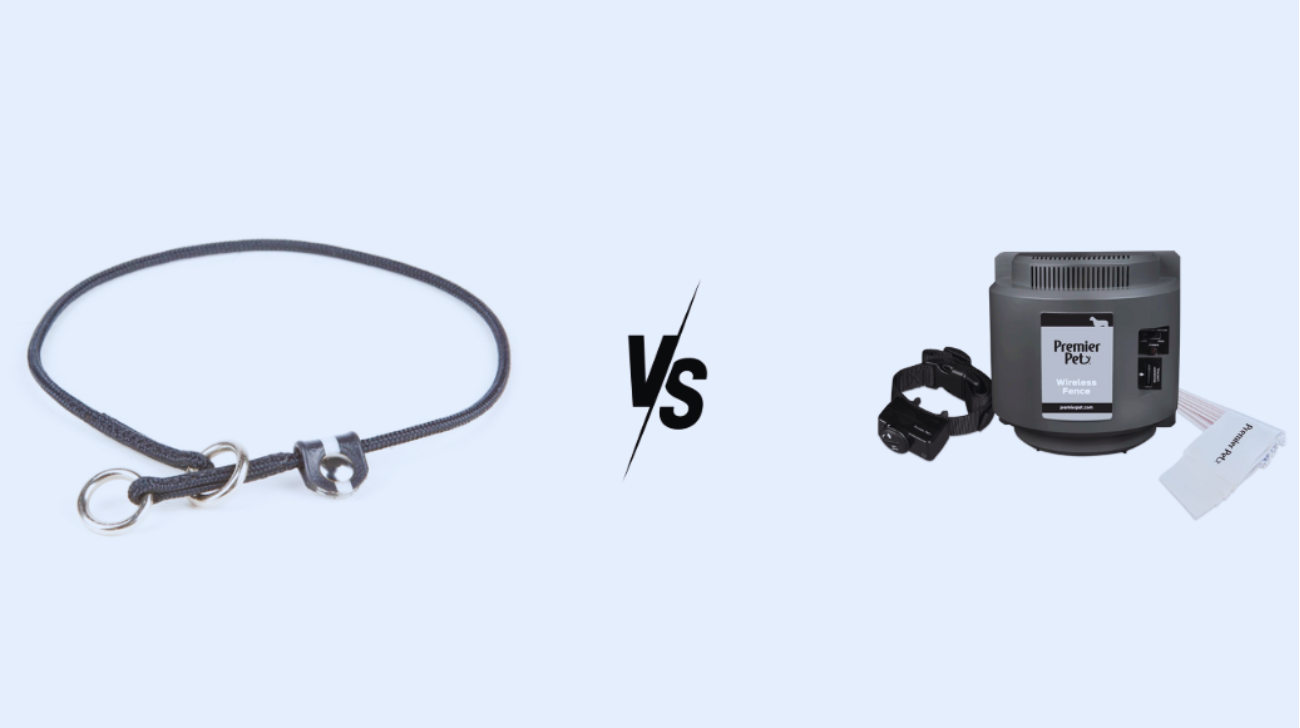When it comes to managing your dog’s behavior and ensuring their safety, two popular solutions that pet owners often consider are training collar and wireless fence. Both tools are designed to help you control and train your dog, but they work in different ways and serve different purposes. The recommended size collar for an English Cocker Spaniel usually ranges from 12 to 18 inches, providing a snug and comfortable fit for your dog.
If you’re a dog owner looking for a way to correct unwanted behaviors and keep your dog safe within a designated area, understanding the differences between these two options can help you make an informed decision.
We’ll explore training collars and wireless fences in detail, comparing their functionality, benefits, drawbacks, and ideal use cases. By the end, you’ll have a better understanding of which tool is right for your dog’s training and safety needs.
Blog Highlights
ToggleMy Personal Opinion
From my experience, both training collar and wireless fence can be effective tools when used properly. Each serves its unique purpose, and in many cases, combining them can provide a more comprehensive solution for managing your dog’s behavior and keeping them safe.
I personally like to use wireless fences for containing my dog in a specific area, especially outdoors, without needing physical barriers. It gives them the freedom to roam while keeping them safe within a defined boundary.
For more behavioral issues such as excessive barking, digging, or jumping, I rely on a training collar to reinforce positive behavior and discourage negative actions. However, I always make sure to use both tools alongside positive reinforcement techniques, such as treats and praise, to create a training environment that is both effective and humane.
Ultimately, the choice between a training collar and a wireless fence depends on your specific goals, your dog’s temperament, and the type of training or containment solution you’re seeking.
What is a Training Collar?
A training collar (also known as an e-collar or remote training collar) is an electronic device that helps pet owners train their dogs by delivering various forms of stimulation.
These collars are typically used to correct undesirable behaviors, reinforce training commands, and even help with off-leash training. A training collar works by sending a mild stimulation to the collar worn by the dog when triggered by the remote control.
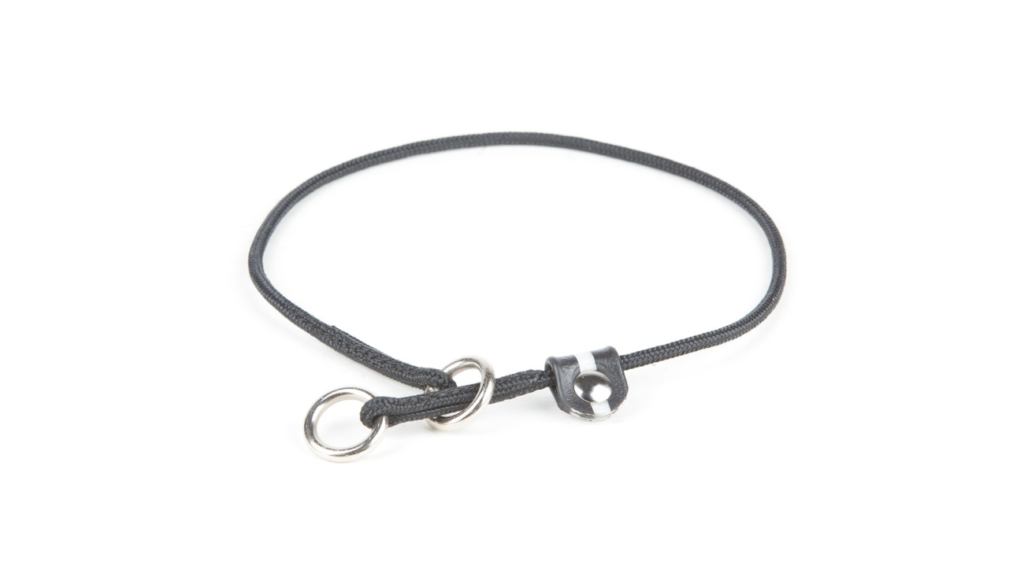
There are several different types of stimulation used in training collars, which include:
- Static Stimulation (Shock): A mild electric pulse that gets the dog’s attention, similar to the static shock you might experience when touching a doorknob.
- Vibration: A gentle buzzing sensation that is used to redirect the dog’s focus or attention.
- Tone: A sound or beeping signal that alerts the dog without physical stimulation.
- Ultrasonic Sound: High-frequency sounds that are inaudible to humans but capture the dog’s attention.
Key Features of Training Collars:
- Adjustable Stimulation: Many training collars allow you to adjust the level of stimulation based on your dog’s size and behavior, ensuring that the feedback is both effective and humane.
- Remote Control: A remote transmitter allows you to control the collar from a distance, giving you flexibility when training your dog in various environments.
- Multiple Functions: Many modern training collars combine different types of stimulation (shock, vibration, tone) in one device, so you can tailor the training approach to suit your dog’s needs.
- Range: Depending on the model, training collars can offer a range from a few hundred yards to over a mile, allowing you to use them both indoors and outdoors.
Ideal Uses for Training Collars:
- Basic Obedience Training: Teaching fundamental commands like “sit,” “stay,” or “come.”
- Behavioral Correction: Addressing behaviors such as excessive barking, digging, jumping, or chasing.
- Off-Leash Training: Using a training collar to reinforce commands when your dog is off-leash in an open area.
- Reinforcement of Boundaries: Teaching your dog to stay within certain limits, whether at home or outdoors.
To find the perfect fit, learn more about what size collar for a Bichon, ensuring your dog’s comfort and safety.
What is a Wireless Fence?
A wireless fence is an electronic containment system that creates an invisible boundary for your dog without the need for physical fences or barriers. This system uses a transmitter placed inside your home or yard to broadcast a signal that forms a circular or custom-shaped boundary.
The dog wears a receiver collar, and when they approach the boundary, they receive a mild correction (either a static pulse or a vibration) to discourage them from crossing the line.
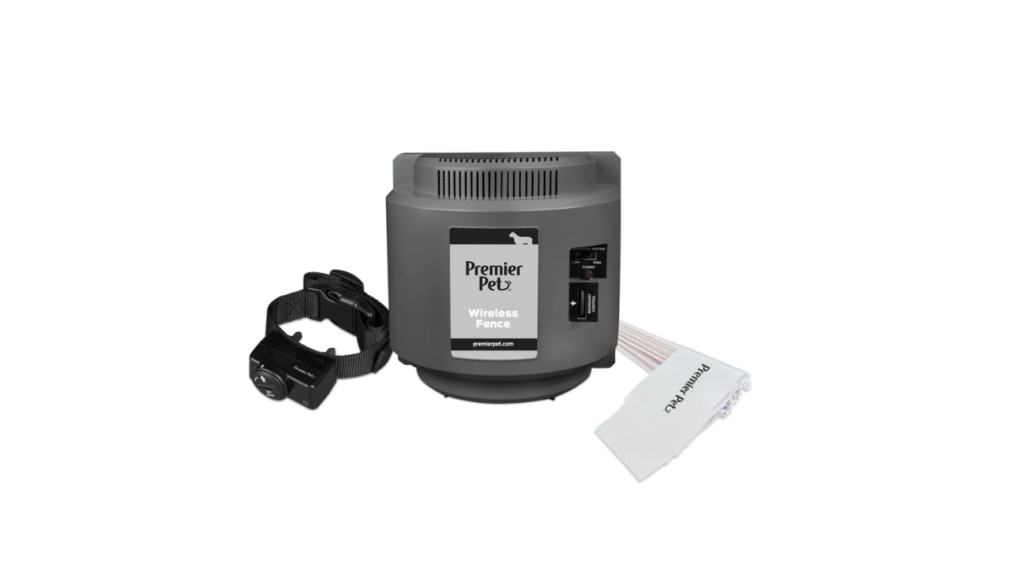
The key advantage of a wireless fence is that it offers flexibility and convenience. You don’t need to worry about building a physical fence, and you can easily move the system to create new boundaries.
It’s particularly useful for pet owners who want to contain their dog within a certain area, like a backyard, without the hassle and expense of traditional fencing.
Key Features of Wireless Fences:
- Invisible Boundaries: A wireless fence creates a virtual boundary that is invisible to both humans and animals, allowing you to set boundaries without taking up physical space.
- Adjustable Range: Most wireless fences allow you to adjust the size of the containment area, depending on your yard or desired boundary.
- Collar Receiver: The dog wears a receiver collar that communicates with the transmitter. When the dog gets too close to the boundary, the collar delivers a correction to deter the dog from crossing the line.
- Portability: Since there are no physical barriers, wireless fences are easy to set up and relocate if needed.
Ideal Uses for Wireless Fences:
- Outdoor Containment: Keeping your dog contained within a specific area, such as a backyard, without installing a physical fence.
- Camping or Traveling: Providing a temporary boundary when you’re traveling or camping with your dog, especially in areas where traditional fences are impractical.
- Large Yards or Open Spaces: Ideal for large yards or properties where installing a physical fence may be costly or impractical.
Discover the ideal option by exploring what is the best collar material for a Bichon Frise to ensure your pet’s comfort and durability.
Comparison Table: Training Collar and Wireless Fence
Training Collar vs Wireless Fence: Detailed Comparison
When it comes to choosing between a training collar and a wireless fence, it’s important to understand the key differences between these two tools. While they both serve to manage your dog’s behavior and safety, their functions are quite different.
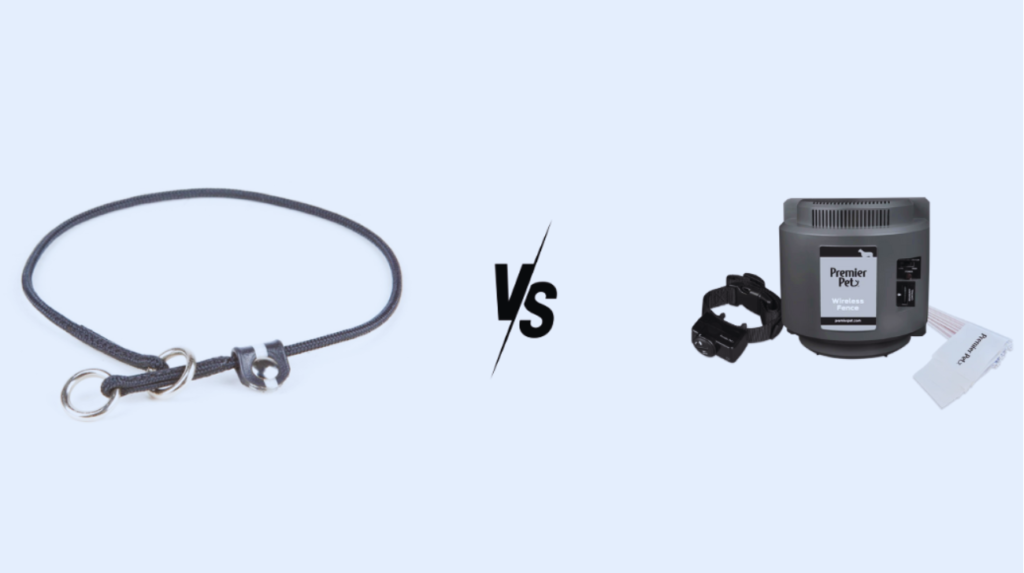
1. Mechanism of Action
- Training Collar: A training collar uses stimulation, such as static shocks, vibrations, or sounds, to train your dog and address specific behavioral issues. It helps to reinforce obedience commands and stop unwanted behaviors.
- Wireless Fence: A wireless fence uses a containment system to create an invisible boundary for your dog. The dog wears a receiver collar that delivers a mild correction if they approach or cross the boundary.
Key Difference: A training collar is primarily used for behavior modification and training, while a wireless fence is focused on creating a physical boundary and preventing your dog from wandering outside a designated area.
2. Usage and Purpose
- Training Collar: Ideal for addressing behavioral issues, teaching new commands, and reinforcing boundaries in off-leash training scenarios.
- Wireless Fence: Best for keeping your dog contained within a specific area, such as your yard or a campsite, without the need for physical barriers.
Key Difference: While a training collar is great for correcting behaviors and teaching obedience, a wireless fence is designed to prevent your dog from escaping or roaming outside a predefined boundary.
3. Effectiveness
- Training Collar: The effectiveness of a training collar largely depends on your consistency and approach. It requires proper use, as overuse or misuse can lead to stress or confusion for the dog. Training collars work best when combined with positive reinforcement methods.
- Wireless Fence: The wireless fence is effective at keeping your dog contained within an area, but it may take time for your dog to learn the boundaries and associate the correction with leaving the area.
Key Difference: Training collars can address specific behaviors with more precision, while wireless fences offer a more passive solution to containment.
4. Adjustability and Customization
- Training Collar: Training collars are highly customizable, offering adjustable stimulation levels, different types of stimulation, and varying ranges, making them versatile for different types of training.
- Wireless Fence: While many wireless fences offer adjustable ranges, they are limited in how much they can be customized in terms of the type of correction or stimulation used.
Key Difference: Training collars provide more options for tailoring the training experience, while wireless fences are more about establishing a fixed containment area.
For a step-by-step guide on how to wear collar to an Affenpinscher, check out this detailed article to ensure a comfortable and secure fit for your dog.
How to Use a Training Collar
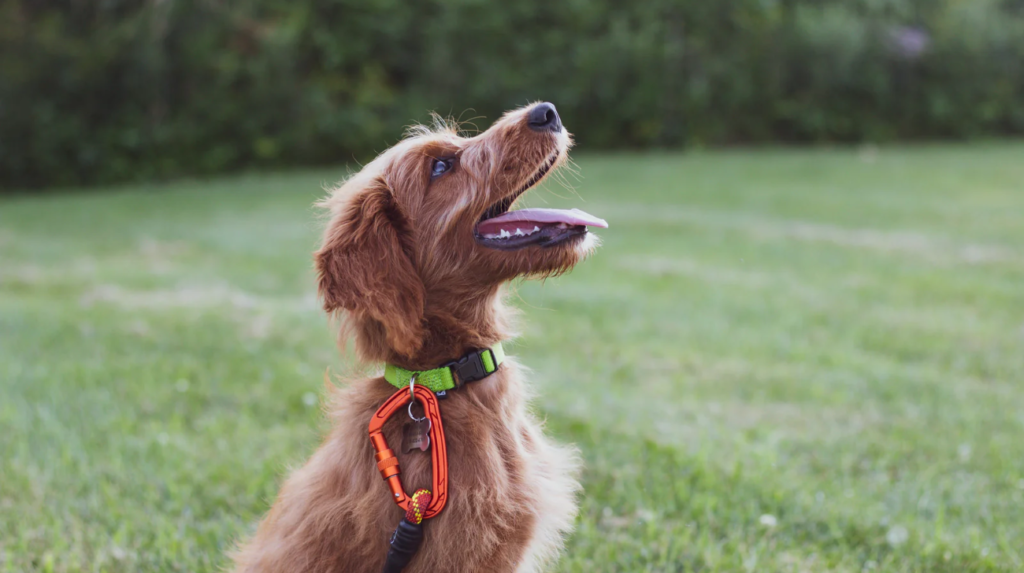
Step 01: Choose the Right Collar for Your Dog
- Fit: Ensure the collar fits snugly around your dog’s neck, but not too tight. You should be able to fit two fingers between the collar and your dog’s skin.
- Type of Stimulation: Select a collar that offers the right type of stimulation for your dog. If you’re just starting out, consider a collar with adjustable levels of vibration or tone before using static stimulation (shock).
- Size and Weight: Ensure the collar is appropriate for your dog’s size. Some collars are designed specifically for small or large breeds.
Step 02: Introduce Your Dog to the Collar
- Allow your dog to wear the collar without activating it to get used to the sensation.
- Gradually increase the amount of time your dog wears the collar, ensuring they are comfortable with it.
Step 03: Start with Low Intensity Levels
- Begin training by setting the collar to its lowest stimulation level. If using static stimulation, start with a mild pulse, just enough to get your dog’s attention.
- Use the remote control to deliver the signal only when necessary, such as when your dog is barking excessively or not following commands.
Step 04: Use Positive Reinforcement
- Pair the use of the training collar with positive reinforcement (treats, praise, or toys). When your dog responds correctly, reward them immediately to strengthen the behavior.
- Positive reinforcement helps the dog associate the correction with a desired outcome and encourages learning.
Step 05: Gradually Increase Stimulation (If Needed)
- If your dog doesn’t respond to the lowest level of stimulation, gradually increase it until you find the minimum effective level.
- Avoid using the highest levels of stimulation unless absolutely necessary. The goal is to get your dog’s attention without causing fear or distress.
Step 06: Be Consistent
- Consistency is key to effective training. Use the collar during regular training sessions, ensuring you reinforce commands and corrections consistently.
- Limit training sessions to 10-15 minutes to avoid overwhelming your dog. Short, focused training is more effective.
Step 07: Monitor Your Dog’s Behavior
- Observe your dog’s reactions to ensure they are learning and not feeling stressed. If signs of anxiety or discomfort appear, reduce the intensity and take breaks.
- Consult with a professional trainer if needed, especially if your dog is not responding well to the collar.
The American Staffordshire Terrier’s coat type is short, sleek, and easy to maintain with regular brushing.
How to Use a Wireless Fence
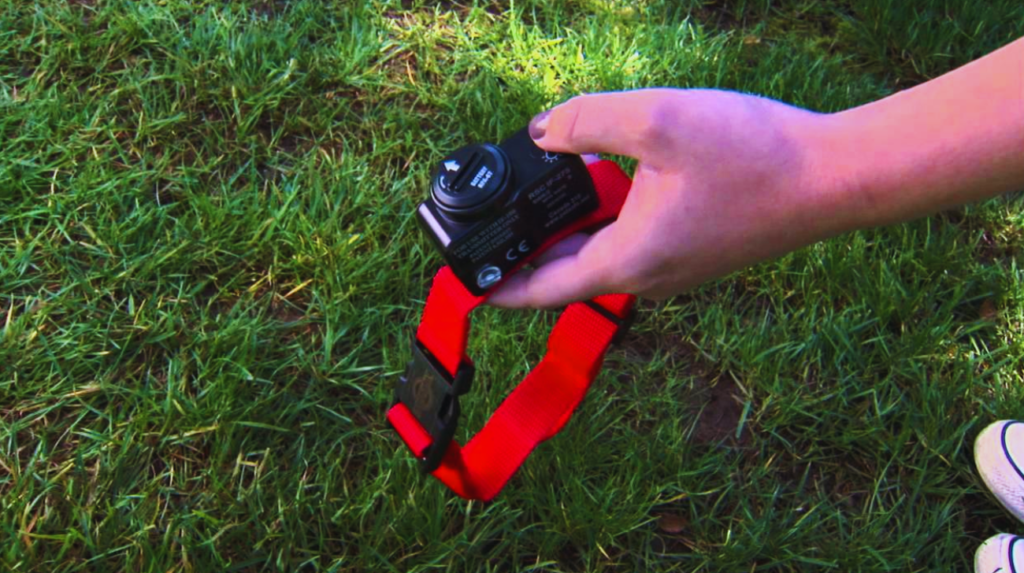
Step 01: Set Up the Transmitter
- Position the transmitter indoors, near a power outlet. The transmitter will create a signal that forms an invisible boundary for your dog.
- Ensure the transmitter is centrally located to create an even signal coverage for your designated containment area.
Step 02: Adjust the Boundary Area
- Many wireless fences allow you to adjust the size and shape of the boundary by modifying the transmitter’s settings. The boundary can range from a few feet to several hundred feet in diameter.
- Choose the appropriate size for your yard or desired area to ensure safety, ensuring no dangerous zones lie within the perimeter.
Step 03: Fit the Collar on Your Dog
- Place the receiver collar on your dog, ensuring it fits snugly but not too tightly. The collar should be positioned high on the dog’s neck, where the receiver can pick up the signal from the transmitter.
- Make sure the collar has enough length to fit comfortably but is not loose enough to slip off.
Step 04: Test the Boundary
- Walk your dog around the boundary area and observe their reactions as they approach the edge. The collar will emit a warning tone or vibration when they get close to the boundary.
- If the collar has static stimulation, the dog will receive a mild shock if they cross the boundary. Start at a low level of stimulation and increase as needed.
Step 05: Train Your Dog with the Wireless Fence
- Begin by walking your dog near the boundary to help them understand the limits. Ensure they experience the warning signal (tone or vibration) when approaching the boundary.
- Repeat this process to allow your dog to associate the warning sound with the boundary. Reward them when they stay inside the area or respond correctly to the warning.
Step 06: Gradually Increase the Distance
- Once your dog understands the boundary, gradually increase the distance and complexity of the training. Start by leaving your dog inside the boundary for longer periods and slowly increase the range of the wireless fence.
- Ensure that your dog stays within the boundary without crossing over the limit, and use positive reinforcement whenever they successfully stay inside.
Step 07: Monitor Your Dog’s Behavior and Adjust as Needed
- Regularly check if your dog understands the boundaries. If they seem confused or constantly try to break through, reduce the stimulation or modify the boundary settings.
- If you notice that your dog is avoiding the collar or showing signs of distress, consult the manufacturer’s guide or a professional trainer to ensure proper usage and adjustments.
The best collar size for an American Staffordshire Terrier ensures a comfortable and secure fit for your dog during walks and training.
Conclusion: Which Is Right for You?
Ultimately, the decision between a training collar and wireless fence depends on your specific needs as a pet owner. If you need to train your dog to follow commands, correct undesirable behaviors, or reinforce boundaries in different environments, a training collar is likely your best option.
If your goal is to keep your dog within a certain area, such as your yard, without building a physical fence, a wireless fence is an excellent choice.
In many cases, combining both tools can provide a holistic approach to both behavior training and containment. Remember to always use these tools with care, ensuring that your dog’s safety and well-being are your top priorities.
To find out the what size collar for an Affenpinscher, ensure you measure your dog’s neck correctly for a perfect fit.

